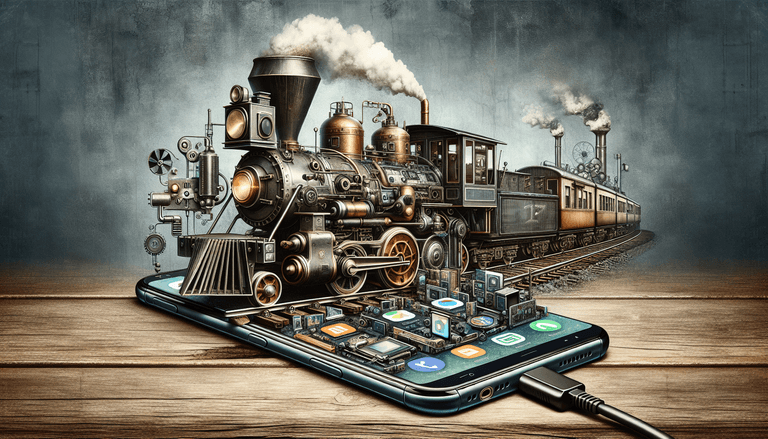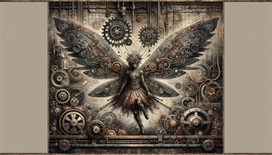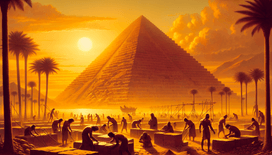Ah, the age of coal-dusted dreams and clattering looms, welcome to the Industrial Revolution! A period so bustling with innovation and change it could keep even the most detached historian up at night, dreaming of whirring gears and roaring engines. But what if we were to throw a spanner in the works, a digital one at that? Imagine the very same revolution, but with one key upgrade: the ubiquitous smartphone.
Picture this: it’s the mid-18th century, and James Watt just received an unexpected delivery, a sleek, modern smartphone. You see, whilst Watt was busy crafting the steam engine into something fit for a mechanical pantheon, we’ll saddle him with the added responsibility of Instagram content creator. Join me, Timewarp Terry, as we intrusively probe this industrial version of ‘What’s the Wi-Fi Password?’
Watt's Up: The Dawn of Industrial Texts
James Watt, already known for refining the Newcomen steam engine, was a man of vision. A man, incidentally, who would have made William Wordsworth jealous with his wordsmithing skills had he swapped out gear grease for Twitter grease. Armed with a smartphone, Watt now has the ability to text his collaborators with such Shakespearean conciseness and entrepreneurial spirit:
- Message to Matthew Boulton: "Plz Shift More Coal Faster. #Efficiency"
- Memo to the City of Birmingham: "Steam is hot, but our ideas are hotter. 💨👷💡"
- Daily Tweet: "Pumping up the volume, and the water. 🚂🔧"
His seminal work, the separate condenser, went from workshop darling to celebrity blast furnace, gaining notoriety faster than you could say "industrial espionage." All the while, his knack for digital diplomacy improved what letters couldn’t, speed and immediacy. Watt would even set up group chats with fellow geniuses like Adam Smith and Josiah Wedgwood, simply named "Round Table of Revolution." At this virtual table, they could share ideas, memes of overloaded horse-drawn carts, and perhaps even discuss muskets being replaced by the more menacing "poke," or "poke"-essentials.
Breaking New Ground with Blockchain?
The Industrial Revolution was, at its core, a time of people figuring out how to move faster, make more, and fail spectacularly more publicly. Imagine the addition of modern financial wizardry, where tradesmen now track their supplies using blockchain. A steam-powered factory where workers scan QR codes to log materials? It’s not just about keeping the wheels turning but keeping them efficiently oiled. Enter smart contract agreements validated with a cryptographic signature, a seal of approval, if you will, souped-up for our age of "litigation and other things my lawyer explains."
Boulton & Watt’s factory would have been ablaze with notifications about new supply orders, regulatory amendments, and labor protests enabled by a more interconnected working class. The famous Luddites, not content with simply smashing mechanical looms, would now start #HackTheFactory in attempts to disrupt Watt’s inventiveness. Yet, the smartphone’s social media dimensions transform them into the first cyber-dissenters of the Industrial Revolution. Imagine them producing viral TikTok videos of botched railways prints or dances mocking steam-power quarks. Anarchy goes digital with the power of the almighty "Like!"
A Dickensian Twist in Every Timeline
Dickensian London, ever nostalgic and clouded by soot, would find itself at the crossroads of smog and smug. Authors like Charles Dickens would feed off the rapidity of Watt's industrial social media posts to quill tales not just enveloped in smog but in hashtags. "A Tale of Two Timelines" might unfold: "It was the best of apps, it was the bust of apps…" The struggle to keep up with technological advances becomes the very fuel for Dickens’ narratives, published chapter by chapter through Watt’s trending vlogs.
In this smartphone revolution, innovations shoot past the speed of coal-fed assembly lines, propelling our societal ingenuity into an unimaginable realm of... more cat videos! But, dear readers, if there is one thing James Watt taught us, it’s that in a world constantly oscillating between the old and the new, even the simplest steam engine design has the propensity to become a cult meme, or at least, an enduring legend.
So the next time you’re at the cries of your latest gadget demanding updates galore, spare a thought for James Watt, whose only "Not Now" was the relay of endlessly evolving gears. If not for such tireless dedication, who’s to say we wouldn’t all still be sitting by candlelight, wishing for a timeline where the Industrial Revolution had its Twitter feed?







